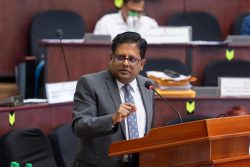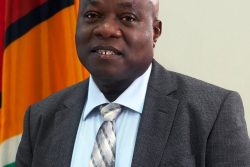CARACAS, (Reuters) – Hundreds of Venezuelans queued up in miles-long lines to try to fill their cars with subsidized gasoline over the weekend, a week after President Nicolas Maduro launched a new dual-price system aimed at easing an acute fuel shortage.
Maduro on May 30 announced the new system in which motorists could purchase up to 120 liters (31.7 gallons) of gasoline at a heavily subsidized price of 5,000 bolivares (2.5 U.S. cents) per liter, and 50 U.S. cents per liter thereafter. Some 200 gas stations were designated to charge solely at the higher price.
That change effectively ended decades of heavy subsidies in Venezuela, an OPEC nation with the world’s largest crude reserves and where cheap fuel has long been considered a birthright of sorts. The new plan caused chaos and confusion at service stations across the country when it began on June 1.
While Venezuelans with resources can now wait in shorter lines at the stations tapped to charge higher prices, those seeking subsidized fuel, such as 42-year-old car mechanic Pedro Mujica, had no choice but to wait in seemingly endless lines.
“With what little I earn, I can’t afford to pay the higher price in dollars,” Mujica said early in the morning, some 13 hours after he arrived at a Caracas gas station in his 1991 two-door BMW car.
“It is unnecessary that we Venezuelans are living through such problems,” he said, with his four-year-old daughter Aranza on his lap.
Fuel shortages have plagued Venezuela for years as its economy deteriorated due to a plunge in the price of crude, its main export, as well as socialist policies that many economists criticize as misguided.
But the shortages grew more acute this year due to a near-complete collapse in the South American country’s 1.3 million barrel-per-day refining network, as well as U.S. sanctions designed to force Maduro, a socialist, from power.
Maduro launched the new gasoline system after receiving five shipments of fuel from Iran, another U.S. adversary whose oil sector is under sanctions by Washington. But the government has not provided details of how much arrived through the shipments.
‘NOT NORMAL’
Opposition leader Juan Guaido, who has been recognized by more than 50 countries as the legitimate president of Venezuela, visited people waiting at a gas station in Caracas on Saturday, and pledged to “remain mobilized” against Maduro, who he labels a dictator.
A wave of protests aimed at ousting Maduro early last year has largely fizzled out, particularly in recent months due to a coronavirus-related quarantine.
“This line is not normal,” Guaido said in a video posted on Twitter. “I understand the frustration that we feel in these lines for unfortunately having to search for fuel when we shouldn’t have to, but we cannot grow accustomed to it.”
Neither Venezuela’s state-run oil company Petroleos de Venezuela nor the government’s oil or information ministries responded to requests for comment for this story.
“It bothers me, but not enough to drive me crazy, said 22-year-old Pedro Perez, who entertained himself by playing the ukulele inside his dark-red Toyota in the line for non-subsidized gasoline – a shorter but still lengthy wait.
He said he needed gasoline to get to appointments to process his migration documents, as he plans to leave the country to live with family in Europe or the United States. Millions of people have left Venezuela during a crisis marked by chronic shortages of food and medicine and failing power, water and healthcare systems.
Raising gasoline prices has long been considered the third rail of politics in Venezuela. A previous attempt to cut subsidies and implement other market-friendly reforms in 1989 led to a violent uprising known as the Caracazo.
But this time, there were no signs yet of major unrest in response to the latest move.









